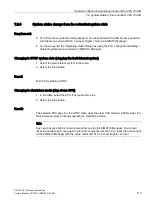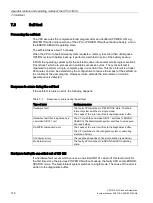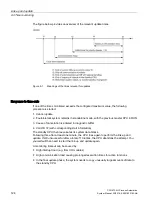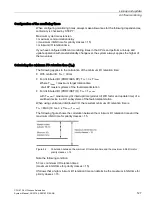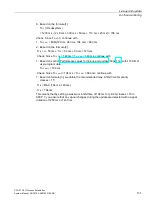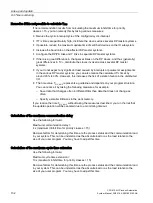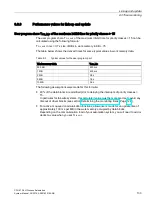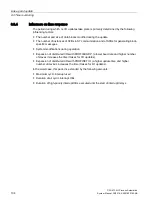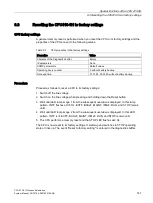
Link-up and update
8.3 Time monitoring
CPU 410-5H Process Automation
System Manual, 09/2014, A5E31622160-AB
127
Configuration of the monitoring times
When configuring monitoring times, always make allowances for the following dependencies;
conformity is checked by STEP 7:
Maximum cycle time extension
> maximum communication delay
> (maximum inhibit time for priority classes > 15)
> minimum I/O retention time
If you have configured different monitoring times in the CPUs and perform a link-up and
update operation with master/standby changeover, the system always applies the higher of
the two values.
Calculating the minimum I/O retention time (T
PH
)
The following applies to the calculation of the minimum I/O retention time:
●
With central I/O: T
PH
= 30 ms
●
For distributed I/O (PROFIBUS DP): T
PH
= 3 x T
TRmax
Where T
TRmax
= maximum target rotation time
of all DP master systems of the fault-tolerant station
●
For distributed I/O (PROFINET IO): T
PH
= T
wd_max
with T
wd_max
= maximum cyclic interrupt time (product of WD factor and update time) of a
switched device in all IO subsystems of the fault-tolerant station
When using central and distributed I/O, the resultant minimum I/O retention time is:
T
PH
= MAX (30 ms, 3 x T
TRmax
, T
wd_max
)
The following figure shows the correlation between the minimum I/O retention time and the
maximum inhibit time for priority classes > 15.
Figure 8-2
Correlation between the minimum I/O retention time and the maximum inhibit time for
priority classes > 15
Note the following condition:
50 ms + minimum I/O retention time
≤
(maximum inhibit time for priority classes > 15)
It follows that a high minimum I/O retention time can determine the maximum inhibit time for
priority classes > 15.

